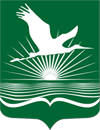Please use this identifier to cite or link to this item:
https://rep.polessu.by/handle/123456789/16202| Title: | The assemblages of corticioid fungi (Basidiomycetes) in broadleaf-spruce forests in Belarusian Moraine Ridge physiographic province |
| Authors: | Yurchenko, E. |
| Keywords: | cluster analysis Corticiaceae s.I. Querco-Piceetum sample plot |
| Issue Date: | 2007 |
| Citation: | Yurchenko, E. The assemblages of corticioid fungi (Basidiomycetes) in broadleaf-spruce forests in Belarusian Moraine Ridge Physiographic Province / E. Yurchenko // Karstenia : тhe Journal of the Finnish Mycological Society. – 2007. – Vol. 47, No. 1. – P. 17–28. |
| Abstract: | Inventories of corticioid fungi (Basidiomycetes) were carried out on four permanent 400 m2 sample plots scattered over Belarusian Moraine Ridge. Selected coenoses belong to boreonemoral vegetation zone and the forests are dominated by spruce, aspen and oak, of Oxalis and Aegopodiumtypes. The number of corticioid fungi in these forests was in average 37 species, which permits to evaluate Querco-Piceetumas the most species-rich forest type. The largest genera were Hyphodontia(5–7 species per plot) and Peniophora (3–4 species, respectively). In general, the more dead wood was produced by a host the higher was the number of fungal species inhabiting it. In this study spruce plays a minor role as a host for corticioid fungi (in boreonemoral forests), harbouring only a few species. Cluster analyses demonstrated that structure of fungal assemblages is dependent on the type of plant association, and in several cases also on geographical distance between the study sites. |
| Appears in Collections: | Публикации сотрудников / Publications of the teaching stuff of Polessky State University |
Files in This Item:
| File | Description | Size | Format | |
|---|---|---|---|---|
| Yurchenko_E_The_assemblages of corticioid fungi (Basidiomycetes) in broadleaf-spruce forests in Belarusian Moraine Ridge Physiographic Province.pdf | 1.43 MB | Adobe PDF | View/Open |
Items in DSpace are protected by copyright, with all rights reserved, unless otherwise indicated.
